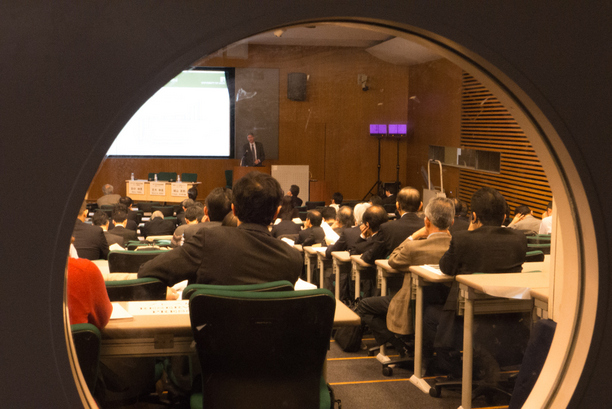The 5th Energy Policy Roundtable 2012 Report
Hisashi Yoshikawa
Project Professor, UTokyo Policy Alternatives Research Institute (PARI) / Graduate School of Public Policy (GraSPP), the University of Tokyo
Aug. 9, 2013
日本語ページへ
The 5th Energy Policy Roundtable 2012 Program
Energy Policy Roundtable 2012
The Potential Impact of Energy Technology Innovation

| [Date] | Thursday, December 19, 9:30-11:45 (Hall opens at 9:00) |
|---|---|
| [Venue] | Room 213, Faculty of Engineering Bldg. 2, Hongo Campus, The University of Tokyo |
| [Hosted by] | UTokyo Policy Alternatives Research Institute (PARI) |
| [Co-hosted by] | Science of Science, Technology and Innovation Policy Unit, Graduate School of Public Policy (GraSPP) |
| Keynote Speech | |
|---|---|
| Prof. Peter Taylor | Professor of Sustainable Energy Systems, Centre for Integrated Energy Research, University of Leeds Handout |
| Panel Discussion | |
| Mr. Nobuo Tanaka | Global Associate for Energy Security and Sustainability at the Institute of Energy, Economics, Japan (IEEJ) / the former Executive Director of the International Energy Agency (IEA) Handout |
| Prof. Hideaki Shiroyama | Director of UTokyo Policy Alternatives Research Institute (PARI) / Vice Dean, Graduate School of Public Policy (GraSPP), the University of Tokyo Handout |
| Ph.D. Nobuhide Kasagi | Principal Fellow, Center for Research and Development Strategy (CRDS), Japan Science and Technology Agency / Professor Emeritus, Department of Mechanical Engineering, the University of Tokyo Handout |
| 11:30-11:45 --Q&A-- | |
| Moderator | |
| Prof. Hisashi Yoshikawa | Project Professor, Graduate School of Public Policy (GraSPP) / UTokyo Policy Alternatives Research Institute (PARI), the University of Tokyo |
The 5th Energy Policy Roundtable was held on December 19th. The session was co-held by the Educational Research Unit, "Science, Technology and Innovation Governance (STIG)," Tokyo University Graduate School of Public Policy (GraSPP), the Univerisity of Tokyo, as the 2nd Policy Platform Seminar. The theme chosen for this roundtable seminar was "Energy Technology Innovation," which is an interdisciplinary policy challenge that will continue to be significant for many years. Energy technology innovation, which involves energy security and global warming, constitutes a key element for all the so-called "3E" initiatives, which are economic growth, energy security and environmental conservation. When looked at from a holistic view of science and technology, it is also an important field from which ripple effects can be expected. For this roundtable seminar, the organizers invited as the keynote speaker, Professor Peter Taylor at the University of Leeds, who spoke about how energy technology innovation can help address the global and regional energy issues and how the acquirement of best practices in energy technology and realistic policies focused on achieving specific targets can accelerate the pace of innovative developments in this technological field, among others.
Dr. Taylor is currently Professor of Sustainable Energy Systems in the Centre for Integrated Energy Research at the University of Leeds, who during his five years of tenure until last year as the Head the Energy Technology Policy Division at the International Energy Agency (IEA), served as the key person responsible for enriching the contents of IEA's flagship publication, Energy Technology Perspectives and thus realizing such a high profile. Following Professor Taylor's keynote speech was a panel discussion conducted by the following panelists:
Nobuo Tanaka, Global Associate for Energy Security and Sustainability at the Institute of Energy Economics, Japan (former Executive Director of IEA);
Hideaki Shiroyama, Professor, Graduate School for Law and Politics, The University of Tokyo (Director of UTokyo Policy Alternatives Research Institute, Vice Dean of Graduate School of Public Policy)
Nobuhide Kasagi, Principal Fellow, Center for Research and Development Strategy, Japan Science and Technology Agency (Professor Emeritus, Department of Mechanical Engineering, The University of Tokyo)
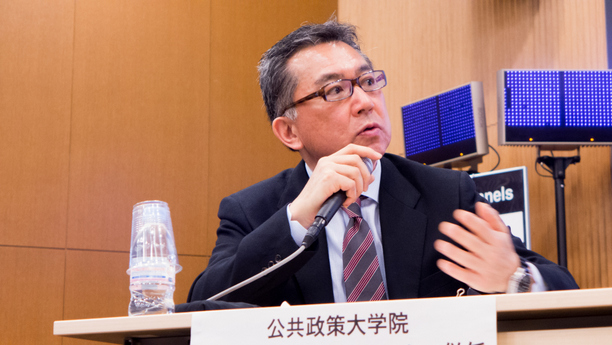
Moderator: Prof. Hisashi Yoshikawa
First, Professor Taylor's keynote speech is as outlined below:
When we look at the current challenges over various types of energy from the global standpoint, in relation to IEA's "World Energy Outlook (WEO) 2012," we see that although renewable energy resources are increasing worldwide, our dependence on fossil fuels is unavoidable for the time being. While energy demand is growing largely in non-OECD member states, energy consumption per GDP is declining in all regions. As a result, energy consumption is not increasing as rapidly as economic growth. At the same time, the gap in the amount of energy used is narrowing between nations. Furthermore, the global trend is that the self-sufficiency ratio of energy is declining, whereas the dependence on imported energy is rising, with one exception: the United States. The increase in its domestic production of unconventional petroleum and gas will lower its dependence on importing these two energy resources. In fact, the United States is gearing up to become a gas exporter. In China and some other countries, the financial impact of import costs especially for securing petroleum and natural gas is expected to continue growing until 2035. As regards the impact of CO2 emissions, world emissions will increase by 23% to 37G ton by 2035. The main contributors to the increase in CO2 emissions are China, India, ASEAN nations, and the Middle East. By 2035, the amount of CO2 emitted in non-OECD member states is expected to grow over 50% by 2035. As a result, it is currently expected to be extremely difficult to achieve the targeted 450PPM.
The key to solving the trilemma (energy security, environmental conservation and economic efficiency) faced by energy policymakers is technology. We need to find a more unified and smarter energy system. But how can we stimulate and accelerate innovations for solving this trilemma?
According to IEA's "Energy Technology Perspective (ETP) 2012", the end users in mainly the power generation sector (42%) and other end users (industry, transport, building, etc.) need to further reduce CO2 emissions in order to meet the so-called "2℃ scenario" as the targeted global warming limit (450PPM target). In technological terms, this target is translated as achievable by improving energy efficiency (31%, the largest impact expected to contribute to total energy savings), renewable energy (28%), CCS (22%), and so forth.
IEA's assessment however shows that in many areas of clean energy technology, the development is not progressing sufficiently. In order for these areas to be on track and achieve the expected progress, additional measures are necessary. The only areas where the future looks relatively bright are renewable energy and energy efficiency in the transport sector. In the area of renewable energy, improvements are evident especially in solar photovoltaics (PV) and wind power. Technological advancement and cost-savings in solar PV has led its share to increase by 42%. Development of wind, hydro and biomass technologies are also moving ahead. Yet, their increase in share remains limited since their baselines were at low level to start with. In the transport sector, many countries are improving their fuel efficiency, with Japan marking the top score. Due to legislative and other regulatory support, CO2 emissions in all of these countries are on the decline. However, many countries still do not have fuel efficiency standards established to set their own improvement targets. Therefore, it is important to share the best practices in this area with these non-OECD countries. Establishment of such standards is the first step to triggering efforts to further improve overall fuel efficiency.

Prof. Peter Taylor
According to the document on the pace of the development and diffusion of energy technology released directly before COP 2009, it took 30 years in the past for an innovative technology newly introduced to the market to acquire a share of 1%, implying that the lead time for energy technology to be put to practical application is very long. This development process needs to be accelerated.
The energy innovation system with multiple processes
According to Global Energy Assessment 2012, the energy innovation system does not follow a simple linear path and is much more complex, requiring it to go through multiple processes from research, development, demonstration, market creation to diffusion. Not only is technology essential, but the participation of stakeholders including the government and private corporations, the flow of information, institutions and mutual interactions are also considered to be highly important for energy innovation to bloom. This approach requires collaboration through various forms of interactions, with particular emphasis on bi-directional relations between society and institutions.
When we look at the financial expenditure on research and development (R&D) of the IEA member countries, the gross spending of all these nations combined reached the first peak around the end of the 1970's. Since then, the expenditure on R&D continued to decline until about a decade ago, when it began increasing again. In the meantime, the United States enacted the American Recovery and Reinvestment Act (ARRA) as an economic package to stimulate investment in fields such as renewable energy. The usage of R&D funds has for a long time been focused on the development of nuclear power technology. Recently, increasing amounts of funds are being invested in the research and development of renewable energy and on the improvement of energy efficiency. In terms of national R&D expenditure against GDP, there is a large gap between countries. Among all the countries that have been compared, Finland is allocating the most, spending 0.15% of its GDP on national R&D expenditure. While the overall global expenditure on R&D is on the rise, the amount invested in energy-related R&D projects is at a standstill. In terms of the total amount spent on R&D by country, Japan is relatively steady with its funding, even though a large portion of its investment is related to nuclear power generation. Among non-OECD member states, a strong inclination to increase the national budget on R&D can be seen in India and China, although this observation is based on a limited source of reliable documents and data. Nevertheless, according to the latest information, China is investing three times more than Japan. Countries are focusing their R&D spending on different fields. China is investing large amounts on R&D related to fossil fuels, while India is spending heavily on reinforcing its nuclear power capabilities. Neither of these countries allocates much capital on increasing renewable energy sources or on improving energy efficiency. Insight can be gained into how much the R&D expenditure is contributing to practical improvements in the energy situation by comparing the number of patent applications filed by each country. Over the last few years, many applications for patents pertaining to energy innovation have been made, particularly in fields such as wind power, solar PV, electric vehicles (EV), hybrid cars, energy storage, and CCS.
A study was once made within IEA, regarding how national policies could help accelerate innovation. The best practices in various countries were gathered, analyzed and reviewed from different angles, including the identification of themes to pursue in planning the policies. Through this study, IEA came to understand that:
1) Policies on energy innovation must support the energy policies on the whole. This seems obvious but actually is not necessarily so. The department of the government that is in charge of promoting energy technology may not be the same department that formulates energy policies. When that is the case, energy policies made by one department are often not adequately linked with the initiatives taken by a different department to strengthen domestic energy technologies;
2) An ample budget that can be spent on energy-related initiatives must be provided from financially comfortable public institutions;
3) The public institutions funding the energy-related initiatives need to coordinate well with each other and require good governance as well. These aspects are also necessary for determining the direction to pursue through R&D.
4) Energy-related initiatives will be further propelled by combining public funds with private investment, and forming public-private partnerships;
5) It is important to monitor and assess the progress of these initiatives. However, there are many countries that are not conducting monitoring and assessment systematically. Systematic assessments must be conducted to evaluate the outcomes of the initiatives and the cause-and-effect relationships between the outcomes and the amounts of capital invested in the initiatives. Lastly, regarding the necessity of international cooperation, its importance is increasing especially in the form of financial support, when considering the severe fiscal circumstances currently faced by the global community.
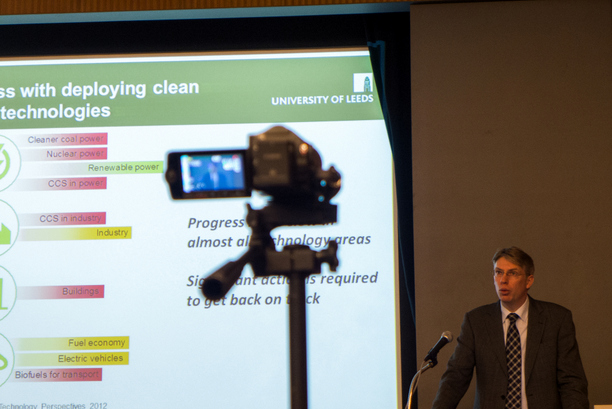
Policies considering the characteristics of the market and the maturity of the technology
So, what policies are necessary to drive innovation? It is insufficient merely to discuss increasing funding to enhance the quality of technological development or creating policies to raise the energy price to make CO2 emissions expensive and waiting for the eventual development of technological solutions to address the increasing cost burden. Rather, effective policies need to combine multiple strategies. Normally, the attempt to introduce an innovative technology is faced with numerous barriers preventing smooth implementation. Policymakers must create appropriate policies that take the characteristics of the market into consideration, instead of setting forth policies relying on the market to react favorably to make the policies effective. Moreover, the nature of the policy varies, depending on the maturity of the technology. For example, targeting the accelerated development of new technologies would require subsidies to fund the R&D programs, whereas promoting technologies that are ready to be introduced to the market would require stable economic incentives appropriate for the given technology (such as, feed-in tariff (FIT) applied to solar PV). In this latter case, policies geared to supplementing the market competitiveness of the targeted technology would be required. Furthermore, when the cost difference between the innovative technology and existing technologies becomes small, programs such as the Green Certificate, which add value and status to the users of innovative technology would be valid. And when the technology matures, policies for building standards, such as, the kind implemented for energy efficiency would be effective. These examples clearly indicate that the policy framework must continue to evolve along with the level of development of innovative technologies.
The IEA claims that the correlation between the amount of capital invested and the dissemination of the invested technology exists, but it's not that strong. This analytical finding suggests that, even though minimum financial support is necessary to initiate the development of new technology, spending enormous amounts of money does not necessarily guarantee success. In the case of solar PV, almost no positive output was produced from the initiatives launched in countries such as Greece and Spain. On the other hand, Germany was able to enjoy a positive outcome for the relatively modest amount of capital invested in its development. Whether the investment in developing innovative technology turns out to be successful is dependent on how well the energy market is designed. When there are obstacles other than the cost element, a holistic approach that takes the characteristics of licensing procedure and the electricity market into account is necessary. It is not sufficient to simply provide financial support to develop a technology of interest. Rather, measures to reform the electricity market more broadly, including actions to eliminate the various barriers existing in the market must also be taken at the same time to enable the new technology to become established in the market.
The roles played by best practices also need to be examined. When we reviewed some specific examples of successful policies taken in the world, we found that there are two important elements that are common to successful policies. One is to devise policies that are consistent, and the other element is to implement them continuously for a certain period within a flexible framework. Let us look at the case with Sweden and Switzerland, which succeeded in adopting new heat pump technology. In both these countries, a fund was established in the beginning to initiate development. Once the cost for developing the new technology and using the newly developed technology began to drop, the governments of these two countries decreased the amount subsidized to the developers and users, and gradually allowed the market to grow and expand its autonomous cycle of demand and supply. Through this approach, the new technology that was at first a niche market then started to flourish into a mass production market. Japan also takes a similar approach, known widely in the world as the "Top Runner" program. There are also analytical studies that suggest that participation in international cooperation schemes can open the gateway to the launch of bilateral or multilateral joint development projects that can lead to technological inventions. These examples show that policymakers can learn a lot from best practices. For example, policymakers should recognize that:
- A clear, stable and consistent policy framework attracts investors:
- The target technologies should have a large potential of being applied widely for diverse usage once they have been developed;
- Valid incentive programs should be designed to be transient and easy to lower the amount of financial support provided to the developers and/or users of the new technology as the technology begins to take off and find its growth path;
- Knowledge flow should be accelerated and the network for collaboration should be intensified;
- Appropriate international cooperation should be maintained; and
- Visionary programs should be implemented without fear of failure.
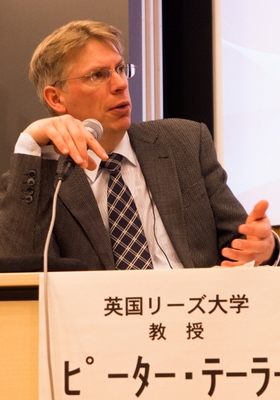
Financial support is important for the innovators to be able to supply their new technologies. But when their newly developed technologies reach the stage of dissemination, investment to stimulate the demand becomes even more important. There is often a tendency for energy policies as well, to mainly target providing support to the suppliers. Some analysts say that if we were to develop an innovative technology that would be required to prevent global warming for the next hundred years, the most important technology in the energy portfolio would most probably be a groundbreaking technology that could improve energy efficiency. To date, investments have mainly targeted the promotion of technological development in the areas of nuclear power, renewable energy and fossil fuels. Going forward, we need to invest more to energy efficiency.
Then comes the question: Approximately how long would a new technology normally need to become a widely accepted practical application? According to an analysis on coal-fired thermal power stations, a new technology has to go through a period of small-scaled demonstration experiment before it is introduced to the power station. A different comparative study on the learning rate of the users (demand side) and the developers (supply side) has concluded that the rate of acquiring new technologies developed at the demand side is higher than those developed at the supply side. Generally speaking, the new technologies developed at the demand side are smaller in scale, have a shorter lifecycle, can be acquired more quickly and can therefore be expected to disseminate faster.
Let us now consider what Japan should do with respect to developing innovative technologies. First, it should aim at building the most advanced energy-efficient society in the world, and to achieve this objective, there is a need to further reform the energy demand structure. Secondly, Japan should establish a distributed energy system for the next generation, and also optimize the supply structure through radical reform. Thirdly, it should convert the energy mix and transform the demand and supply structure along with its technological innovation.
In concluding the keynote speech, the speaker has emphasized the following points:
- The global challenges in energy problems can be resolved through the development and dissemination of clean energy technologies;
- Energy efficiency and renewable energy are realistic options for addressing current energy issues;
- Current efforts to put newly developed technologies to practical use are insufficient;
- Implementation of appropriate technology policies accelerates the progress in technological development and innovation;
- Policymakers should incorporate what they have learned from best practices into the policies they formulate;
- In Japan, the ongoing policy review should be used as an opportunity to shift its energy policies to those that place more importance on developing distributed energy technology and further improving the energy efficiency;
- Japan has the chance to become the global leader in energy-related R&D;
- Asia is emerging as the world's energy center, playing a bigger role in energy innovation;
- Japan and Asia will be able to push energy innovation further ahead by collaborating with each other, and gain greater opportunities to contribute to the process of finding practical solutions to global and regional energy-related issues.
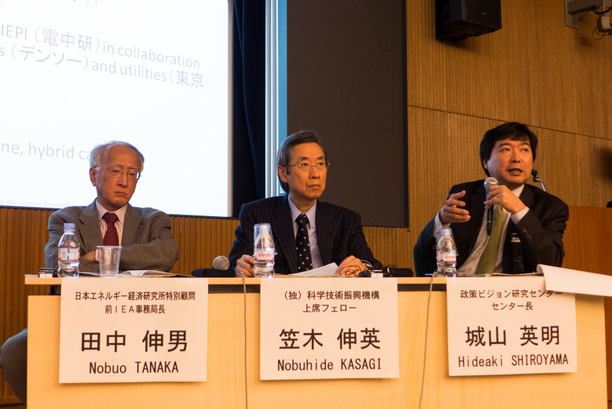
Following the keynote speech summarized above, the panelists entered into heated discussions accompanied by active exchanges of opinions on diverse themes. The overall flow of this panel discussion and the main points raised in each theme are as outlined below:
1. Special nature of energy technology
Energy technology cannot be separated from 3Es and national energy policies. This is an area where research and development must be conducted after the national government has decided on the country's energy policies even if there are elements that are uncertain to some degree. Moreover, energy technology inevitably has to be linked with areas such as national policies and security that may not necessarily be directly related to the economy.
Energy technology is also a type of technology that is driven by external diseconomies such as restrictions on CO2 emissions. Unlike other products or services, electric power is the same no matter how it is generated. Therefore, in order to reap the benefits of energy technology, external diseconomies should be eliminated to the extent possible. Energy technology can vary by how a type of the technology can make the global environment cleaner. This is the only feature that makes each energy technology special and different from others. For cleaner global environment, the entire population must be involved. Looking from the demand side, additional benefits should be provided to stimulate the demand and vitalize the market. Likewise, it is not enough for the suppliers to simply focus on generating more electric power. They should also think of differentiating themselves from others by adding values that their competitors cannot.
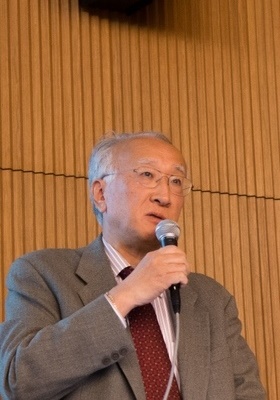
Mr. Nobuo Tanaka
For the development of energy technology, investment with a long-term perspective is essential. Energy technology is connected with national security and has a symbolic meaning to society. Utmost care must be given to gain acceptance from the community, including the selection of the suitable location to develop the technology. Not only is the physical infrastructure (hardware) critical for R&D, human resources, tools, institutions and systems (software) are also equally important. Considering these various aspects, energy technology cannot be defined simply as one type of technology. Rather, it should be regarded as a multifaceted type of technology that can be used to meet a wide range of needs. With this diversity in mind, there is a need to classify this technology into different subtypes based on several key factors including the relationship with the market.
2. Technology assessment
Going forward, Japan's technological policies may also enter a period of dynamic changes. If that is so, now is the time for Japan to perform an elaborate assessment of its technologies from an objective point of view, and prepare for the changes, as it would be a crucial prerequisite before making any new policies or decisions. Especially in the case of energy technology, which is so multidimensional, any policy changes will have major impacts on a wide range of areas including convenience of everyday life, risks, and to a certain extent, on social values, as well as the economy, national security, environment. It would be extremely important for Japanese policymakers to visualize the impact on all these different areas, and prepare as much of such information as possible for deliberation before making their final decisions. The decisions they make at the end of careful scrutiny must ensure that the new policies respond to diverse needs and broaden the scope of the new energy portfolio based on an evaluation of various implications. For this evaluation process, there is a need to first extract all the relevant information, organize it, encourage in-depth discussions, and decide on strategies with a cool-headed perspective. Another important element that should be factored into the evaluation process is to maintain a certain "distance" from what is being evaluated. In the case of Japan, there has been a tendency to collect, organize and evaluate all the relevant information required for making final strategic decisions within a relatively close circle. Policymakers should remember the importance of keeping a certain distance from stakeholders and interest groups in order to be able to see the big picture and think rationally with a broad frame of reference.
3. Structuring of energy, science and technology and challenges
When we think about technology, we must base our thoughts on the guiding principles of science and technology. Likewise, when we think about energy technology, it is important to take the guiding principles of energy into consideration. When we adopt a new technology, we must also be prepared with a tool that enables us to predict how this new technology will affect or change our lives and the global community, among many other things. In addition, the ability to respond to social needs by prioritizing and structuring the issues that need to be addressed is equally important.
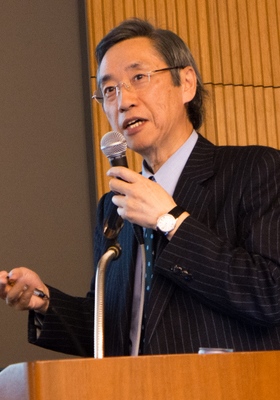
Ph.D. Nobuhide Kasagi
Moreover, we cannot reach a consensus on what to address as high-priority issues unless we define a set of indices to identigy the urgency of the issues and discuss the issues on the basis of these indices organized in a somewhat structured format. Scientists tend to think they can reach an agreement if they can analyze each index qualitatively and find the result logical and justifiable. It is the role of the government to weigh each index and determine which indices are crucial. What researchers can do is to refine each index. For example, if the subject matter were energy efficiency, it would be important for the researchers to get back to fundamental science and look into the interfaces of various materials. Based on such research data, the researchers would be able to determine the theoretical performance and potential efficiency. At present, hydrogen is drawing attention as a highly efficient energy carrier. But ammonia and organic hydrate can also be considered as energy carriers with high potential. Furthermore, the technology for facilitating the use of heat energy should be developed systematically in the direction of preventing it from simply burning, since currently, heat energy is burnt inefficiently only for consumer use and transport purposes.
4. Special features of energy innovation technology and market structure
The transition to a new energy system involves the process of sociotechnical transition. Therefore, when we think about what kind of new technology is useful for our future, we must also factor in the social needs of our future community. We should not only think about technology itself but also think from a perspective and in a context that are both broad and long-ranged. Although this may be a generalization, when we think about the big picture of innovation in energy-related matters, we should look at it from both the innovation side and the energy side of the picture. It is also important to classify what we see in both aspects, based on the distinctive features of the technology and the structure of the market.
5. Energy policy making
Strategy is also important for energy technology. It is desirable to discuss about energy on various occasions and understand the issues in depth through multidimensional assessments. Also important is the creation of indices to visualize and evaluate the progress of improvements made in energy-related issues, and more importantly, to complete the holistic assessment before heading on to the decision-making and policy-making processes. The occasions and mechanism to review these preliminary actions before reaching decisions and finalizing policies must be firmly established and maintained. In that sense, this roundtable has been set to serve such purposes, and should be utilized to build a network among stakeholders and experts in the subject matters discussed here. Another issue is how we can build literacy between all stakeholders and experts to enhance communication and deepen common understanding. To do so, it is important to bring people from all different but relevant backgrounds to one table, may they specialize in technology or policy, and build a multidisciplinary network of diverse knowledge and broad perspectives.
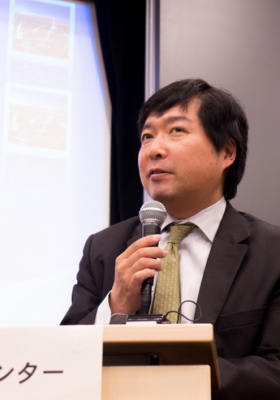
Prof. Hideaki Shiroyama
Policies do not fulfill their true purposes just by allocating budgets to support the creation of innovations directly or indirectly. They need to be combined with deregulation, a favorable taxation system, protection of intellectual property, and other means to realize innovation. Take, for instance, the distributed power supply system, which is drawing a lot of attention these days. Most of the technologies needed to realize this system were already invented in the 90's. This new system was not introduced earlier because the power market was a closed market that did not provide room to accept such new concepts at the time. When we study energy policies, we should not only focus on the energy issues, but also view them from the standpoint of industrial policies. The market cannot resolve energy issues alone. This understanding has motivated, for example, the UK to reorient its direction to revive government-led industrial policies.
The policies must also be prioritized. Setting priority areas in policies is effective in individual nations, especially in small countries. But the same formula applies to global policies as well. The new technologies to seek urgently in the global arena must also be carefully selected based on whether they provide a competitive advantage.
6. Roles of key players and the need for a control tower
In the multi-phased development of energy policies, the actors that lead the development process and the correlation they have with each other change by phase. In some phases, the government takes the lead, while in others, research institutions, universities, and/or private firms play the key roles. These actors not only change by phase, but may also vary by the type of energy technology that is pursued. For example, some analytical reports indicate that natural gas turbines and hybrid cars became widespread, not necessarily by the support of public policies but rather by the initiatives taken by private stakeholders. When viewed in this light, the policies for driving innovation also do not have to be uniform, and should be flexibly planned to address and meet the diverse needs.
Behind the novel products, technologies and innovations that are becoming a reality is the vast pool of scientific knowledge accumulated in the process of development. Such wealth of advanced knowledge must be utilized well and succeeded properly in subsequent challenges to develop future technologies. The role of government is to serve as a control tower to maintain this flow of knowledge inheritance, but this role is not being played adequately with disconnections in many areas of R&D, and this deficit must be remedied as soon as possible.
7. Transitional management
Establishing an energy-related technological innovation involves striking the right balance between efforts to apply the new technology in the field and efforts to design a macro system that can incorporate the new technology smoothly into existing systems. Energy is closely related to the environment, but there are various other aspects that must also be taken into consideration, such as, policy issues in other areas, and that is especially true in the case of a distributed energy system. For example, the issues involved in the relationship between social health-care and energy are more deeply related to urban problems and housing development schemes than with energy. In order to examine solutions to these issues, it is important to involve experts specializing in a wide range of subjects even though their participation and contribution may not be in a formal manner, and to set up occasions to solicit their cooperation.
8. Energy security and technology
Shale revolution has had a big impact in the United States and on the world not only in terms of energy but also in economic terms. Prior to this revolution, around 60% of the trade deficit in the United States was attributable to the import of oil and gas. If this deficit can be reduced with domestic shale gas, it will also lead to the improvement of domestic employment at the same time. Shale gas can be produced at low cost and is not only useful as an energy source but also as a cheap petrochemical raw material that can help increase the cost-competitiveness of domestic companies dedicated to this field of business. In fact, General Electric and other American home-electronic manufacturers are starting to bring back home the local plants that they have set up for the production of white goods in Maquiladora, the free trade zone in Mexico for manufacturing operations. So the competitive position of the US in international markets is bound to rise. Japan should take this into account when it examines its energy mix. Previously, many Japanese economists focused on discussing how to cope with China, but now Japan should also study how to compete with the United States.
